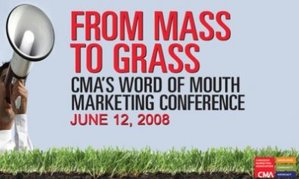I try never to give the same presentation twice. The real world of social media is changing and developing rapidly. And my presentations should reflect those changes. So, what was new last year may be old this year.
If you’re like me, I’m sure that you scrutinize conference agendas closely so that you can pick the topics and sessions that will offer you the greatest opportunity to learn about and discuss issues that matter to you.
I should be shaping my conference presentations to cover the issues that interest the participants. So, I thought I’d ask you, the readers of my blog, what social media topics you’d like to hear about at the conferences you attend this year.
To prime the discussion, here’s a topic for a presentation that I submitted to a conference organizer earlier this week:
Measuring Social Media : Social media gives individuals the power to switch instantly from reader to author. And this has transformed the Internet into a web of communities of interest. Organizations are changing their communications to be part of the communities that matter to their customers, clients and stakeholders. But how do they measure what they are achieving through this effort?
In this session you will learn:
What to measure in social media;
What tools will help you measure social media;
The basic building blocks of a measurement dashboard for community managers.
Would you find a session on this topic useful?
What are the social media topics that you would to hear about at the next conference you attend?




